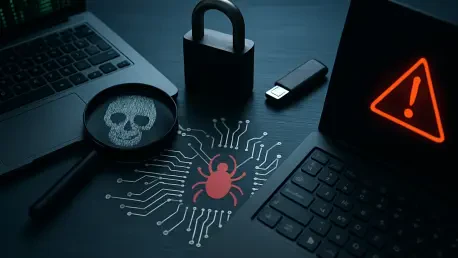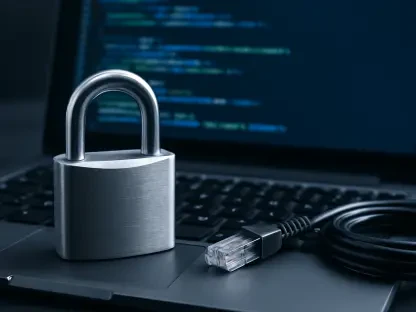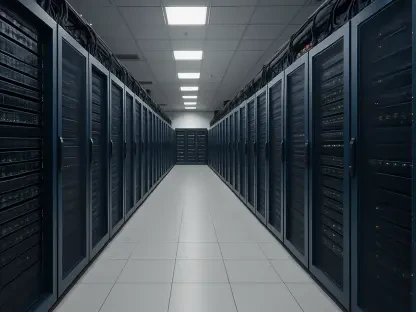Setting the Stage for Cybersecurity Challenges
Imagine a scenario where a single stolen password grants an attacker unrestricted access to an organization’s most sensitive data, bypassing every other security measure in place, a nightmare that is not far-fetched in an era where credential theft and phishing attacks dominate the threat landscape. Studies show that over 80% of data breaches involve compromised identities, making Multi-Factor Authentication (MFA) a critical line of defense that promises to safeguard digital environments by requiring multiple verification steps before access is granted. This review explores the intricacies of MFA, delving into its mechanisms, current adoption trends, real-world applications, and the hurdles that prevent universal implementation. The goal is to provide a comprehensive assessment of this vital technology and its role in fortifying cybersecurity across industries.
Unpacking the Essence of Multi-Factor Authentication
At its core, MFA operates on a simple yet powerful principle: no single point of failure should compromise security. Unlike traditional password-only systems, MFA demands multiple forms of verification, often categorized as something known (like a password), something possessed (such as a token), and something inherent (for instance, a biometric trait). This layered approach significantly reduces the risk of unauthorized access, positioning MFA as a fundamental component of modern security frameworks like zero trust, which assumes no user or device is inherently trustworthy.
The rise of MFA aligns with an evolving threat environment where sophisticated attacks target credentials with alarming precision. Its integration into compliance standards, such as NIST 800-53 and ISO 27001, reflects a broader recognition of its necessity in protecting against identity-based threats. As organizations navigate increasingly complex digital ecosystems, MFA stands as a cornerstone, ensuring that access control remains robust even when one authentication factor is breached.
Diving into MFA’s Core Mechanisms and Features
Exploring Authentication Factors and Their Impact
MFA’s strength lies in its use of diverse authentication factors, each adding a unique layer of security to the verification process. Knowledge-based factors, such as passwords or PINs, are often the first step, but their vulnerability to phishing necessitates additional safeguards. Possession-based factors, like smartcards or mobile app-generated codes, ensure that even stolen credentials cannot be used without the physical or digital token. Inherent factors, including fingerprint scans or facial recognition, tie authentication to an individual’s unique traits, making them harder to replicate.
These factors work in tandem to create a formidable barrier against unauthorized access, with each layer addressing the weaknesses of the others. Their combined effect is evident in reduced breach rates for organizations employing MFA, as attackers must overcome multiple hurdles to succeed. However, the effectiveness of these factors depends on proper implementation, as misconfigurations or user resistance can undermine their protective value.
Seamless Integration with Identity Systems
MFA’s functionality extends beyond individual factors to its integration with identity providers and broader IT systems. Platforms like Okta and Entra ID serve as central hubs for authentication, enabling MFA to be enforced at the point of login for many cloud-based and enterprise applications. This integration ensures a consistent user experience while applying security policies across diverse environments, from SaaS tools to on-premises servers.
Yet, challenges arise when extending MFA coverage to legacy systems or specialized tools that lack native support for modern authentication protocols. Inconsistencies in enforcement often emerge in hybrid setups, where cloud consoles or developer environments bypass MFA during privilege escalation. Addressing these gaps requires careful planning and often third-party solutions to ensure comprehensive protection across all access points.
Tracking Trends in MFA Adoption
The adoption of MFA has gained momentum as cybersecurity frameworks increasingly mandate its use, recognizing it as a non-negotiable safeguard against credential-based attacks. Despite this, statistics reveal a stark reality: many organizations fall short of full implementation, with significant portions of users and systems remaining unprotected. This gap highlights a disconnect between policy intentions and measurable outcomes, driven by the complexity of modern IT landscapes.
Emerging trends point to growing IT intricacy, fueled by the shift to cloud and hybrid environments, which complicates uniform MFA deployment. Additionally, regulatory bodies and auditors now demand tangible proof of enforcement rather than mere policy declarations, pushing organizations to invest in visibility tools. This shift toward accountability underscores the urgency of closing adoption gaps to meet both security and compliance goals.
A notable trend is the recognition of MFA’s role beyond human users, with discussions around securing non-human identities gaining traction. As automation and machine-to-machine interactions proliferate, the need for adaptive MFA solutions becomes evident, signaling a broader evolution in how authentication is approached within dynamic digital ecosystems.
Real-World Applications and Diverse Use Cases
Across industries, MFA proves its versatility by addressing a range of security needs, from protecting financial transactions to safeguarding patient data in healthcare. In the finance sector, MFA secures online banking platforms and internal systems, ensuring that even compromised credentials do not lead to unauthorized fund transfers. Similarly, healthcare organizations rely on MFA to protect electronic health records, aligning with strict regulations like HIPAA while preventing data leaks.
In technology and DevOps environments, MFA plays a pivotal role in securing cloud access and privileged accounts, where developers often assume elevated roles. Unique applications, such as applying MFA to non-human identities like service accounts, demonstrate its adaptability, though limitations persist in fully automating such protections. These use cases illustrate MFA’s critical function in meeting compliance standards while highlighting areas where further innovation is needed.
Specific examples, such as MFA integration into remote access tools for distributed workforces, showcase its practical impact on operational security. By enforcing multiple verification steps for VPN logins or privileged sessions, organizations mitigate risks associated with remote work. However, inconsistent application across niche tools or legacy systems often tempers these benefits, revealing the need for tailored solutions in diverse scenarios.
Navigating Challenges and Limitations in Implementation
Despite its proven benefits, MFA implementation faces significant obstacles that hinder universal coverage. Technical challenges, such as inconsistent enforcement across disparate systems, often result in unprotected access points, particularly in hybrid environments where cloud and on-premises tools coexist. These gaps are exacerbated by legacy applications that resist modern authentication methods, leaving vulnerabilities unaddressed.
Operational hurdles further complicate MFA deployment, especially with privileged accounts where shared credentials or availability concerns lead to disabled authentication layers. Machine-to-machine interactions represent another blind spot, as static tokens or credentials often bypass MFA, creating risks in automated workflows. Addressing these issues requires a blend of policy enforcement and technological innovation to ensure no system is left exposed.
Regulatory pressures add another layer of complexity, as organizations must provide concrete evidence of MFA usage to satisfy auditors. Solutions like Privileged Access Management (PAM) and Identity Governance and Administration (IGA) platforms offer pathways to mitigate these challenges by centralizing control and visibility. Yet, the journey toward comprehensive implementation remains ongoing, with persistent gaps demanding sustained focus and investment.
Envisioning the Future of Multi-Factor Authentication
Looking ahead, MFA is poised for transformative advancements that could address current shortcomings and adapt to evolving IT demands. Innovations in biometric technologies, such as more accurate and user-friendly methods, promise to enhance security without sacrificing convenience. Similarly, efforts to integrate MFA seamlessly for non-human identities could close critical blind spots in automated environments.
The long-term impact of MFA on cybersecurity practices appears profound, with the potential to redefine access control in increasingly complex digital landscapes. Predictions suggest that MFA will evolve into more adaptive systems, leveraging artificial intelligence to dynamically adjust authentication requirements based on risk levels. Such developments could ensure robust protection without burdening users or workflows.
As organizations grapple with expanding attack surfaces, the role of MFA in securing both human and machine interactions will likely intensify. Continuous improvements in integration and enforcement tools are expected to drive broader adoption, positioning MFA as an even more integral component of defense strategies over the coming years, from now through 2027 and beyond.
Reflecting on the Journey and Charting Next Steps
Looking back, this exploration of Multi-Factor Authentication revealed its indispensable role in bolstering cybersecurity, while also exposing the persistent challenges that hinder full adoption across systems and industries. The analysis underscored the technology’s effectiveness when properly implemented, yet highlighted the stark reality of enforcement gaps that leave many organizations vulnerable. Each facet, from core mechanisms to real-world applications, painted a picture of a powerful tool still striving for universality.
Moving forward, the focus shifts to actionable strategies that could elevate MFA’s impact. Organizations are encouraged to prioritize centralized visibility through advanced monitoring and auditing tools, ensuring that policies translate into verifiable outcomes. Investing in solutions like PAM and IGA emerges as a practical step to address privileged access vulnerabilities and non-human identity risks.
Beyond immediate fixes, a commitment to innovation stands out as essential, with an emphasis on adapting MFA to future complexities through biometric advancements and AI-driven approaches. This path promises not only to strengthen security but also to align with evolving compliance demands, ensuring that MFA remains a dynamic shield against ever-changing threats.









